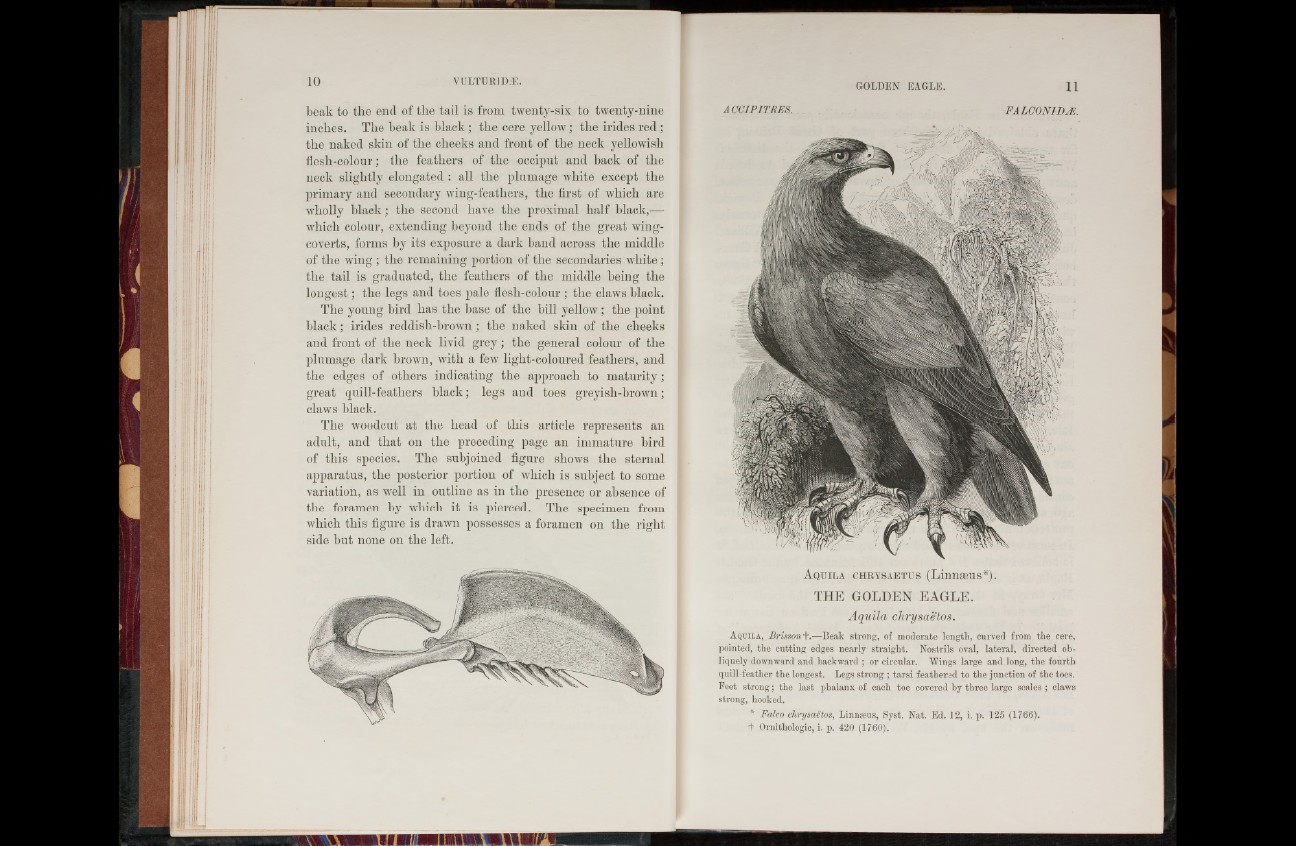
beak to the end of the tail is from twenty-six to twenty-nine
inches. The beak is black; the cere yellow; the irides re d ;
the naked skin of the cheeks and front of the neck yellowish
flesh-colour; the feathers of the occiput and back of the
neck slightly elongated : all the plumage white except the
primary and secondary wing-feathers, the first of which are
wholly black; the second have the proximal half black,—
which colour, extending beyond the ends of the great wing-
coverts, forms by its exposure a dark band across the middle
of the wing; the remaining portion of the secondaries white ;
the tail is graduated, the feathers of the middle being the
longest; the legs and toes pale flesh-colour ; the claws black.
The young bird has the base of the bill yellow; the point
black; irides reddish-brown ; the naked skin of the cheeks
and front of the neck livid grey ; the general colour of the
plumage dark brown, with a few light-coloured feathers, and
the edges of others indicating the approach to maturity;
great quill-feathers black; legs and toes greyish-brown;
claws black.
The woodcut at the head of this article represents an
adult, and that 011 the preceding page an immature bird
of this species. The subjoined figure shows the sternal
apparatus, the posterior portion of which is subject to some
variation, as well in outline as in the presence 01* absence of
the foramen by which it is pierced. The specimen from
which this figure is drawn possesses a foramen on the light
side but none 011 the left.
A CCIPITRES. FALCON1DÆ.
A q u ila c h b y sa e t u s (Linnæus*).
THE GOLDEN EAGLE.
Aquila clirysaëtos.
A q u il a , Brisson*h —Beak strong, of moderate length, curved from the cere,
pointed, the cutting edges nearly straight. Nostrils oval, lateral, directed obliquely
downward and backward ; or circular. "Wings large and long, the fourth
quill-feather the longest. Legs strong ; tarsi feathered to the junction of the toes.
Feet strong ; the last phalanx of each toe covered by three large scales ; claws
strong, hooked.
* Falco clirysaëtos, Linnæus, Syst. Nat. Ed. 12, i. p. 125 (1766).
+ Ornithologie, i. p. 420 (1760).